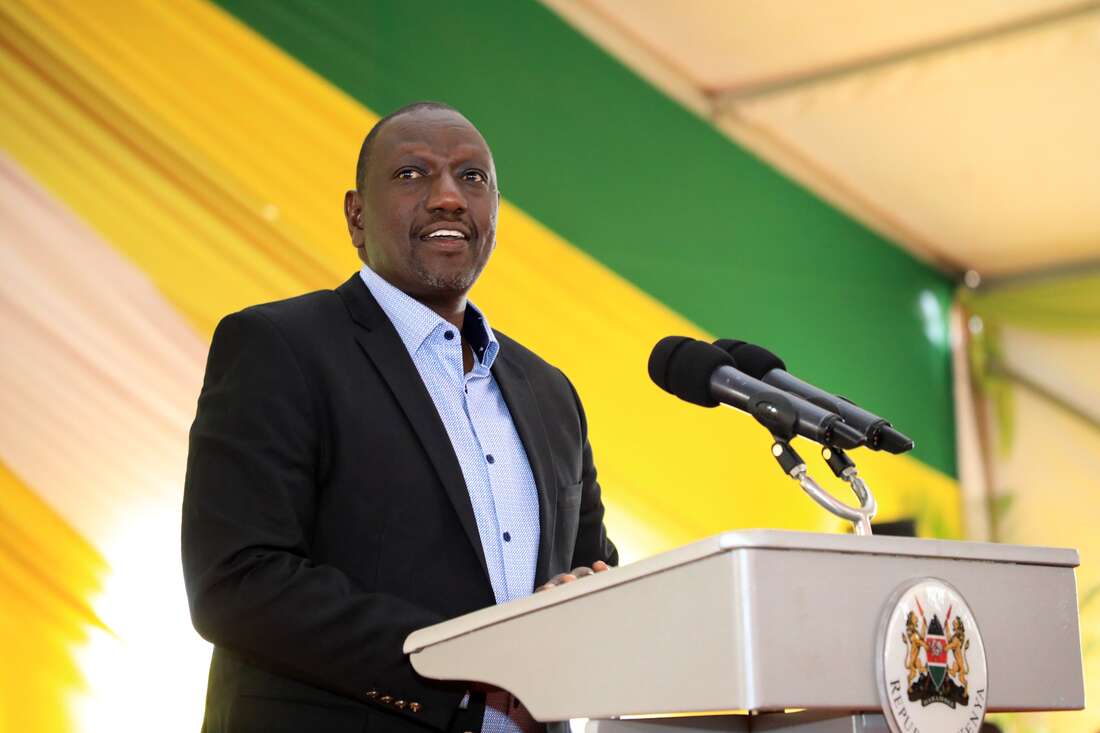State releases Sh2b more for drought response

President William Ruto yesterday painted a gloomy picture of the effects of the relentless drought, indicating at least 5.3 million people were at the risk of starvation.
He said 4.5 million people from arid and semi-arid (ASAL) counties and 856,000 from other regions were facing acute shortage of food and require immediate intervention.
Yesterday, the President pledged an additional Sh2 billion to alleviate the suffering of Kenyans in affected areas.
Out of the 5.3 million, Ruto said, 942,000 were children aged below five years while 135,000 pregnant women and lactating mothers, who, he said, needed urgent treatment for acute malnutrition.
According the President, who was addressing officials of Red Cross at State House yesterday, said the biting drought had created the driest conditions in four decades and killed 2.5 million livestock.
“We are in the grip of the worst drought in 40 years. We have a lot of work to do in mitigating the menace by doing everything to ensure no life is lost,” the Head of State said during the function in which he was installed the patron of the relief agency.
He added: “Because the situation is both dire and urgent, we have agreed that in addition to the Sh3.2 billion that the government had made available, we have again this morning made an additional Sh2 billion to support the food distribution program. I will also be meeting other partners in the course of the week to agree on the budget.”
There was a ray of hope in some parts of the country where rainfall was reported yesterday.
The Kenya Meteorological Department said rains were expected in several parts of the country including, Rift Valley, Lake Victoria Basin, Central, the Coast and North-Eastern in the next one week.
The Head of State said the famine had reached historic magnitudes and had hit 20 out of the ASAL counties and 49 wards in nine others counties in Mt Kenya, Rift Valley and the Lake region.
Canned beef
Eleven counties – Turkana, Marsabit, Samburu, Isiolo, Laikipia, Mandera, Wajir, Kajiado, Tana River, Kitui and Garrisa are in the alarm phase, and facing vegetation deficit that has claimed millions of livestock.
As part of the efforts to mitigate the situation, Ruto said his administration had so far distributed 20,000 bags of rice, 24 bags of beans and 7,000 cartons of canned beef, all worth Sh300 million to Isiolo, Marsabit, Wajir, Mandera, Baringo, Turkana, Kajiado, Samburu and West Pokot counties.
Further, Sh900 million had been used to buy 66,000 additional bags of rice, 88,000 bags of beans and 60,000 cartons of canned beef, which, he said, were being distributed to affected areas in 29 counties.
He added that the government had been giving out canned beef to learning institutions in the affected areas as a way of keeping children in school.
Out of the additional Sh2 billion available for the purchase of food, Ruto said Sh250 million will be made available to Kenya Red Cross in addition to other Sh340 million that had been contributed by Kenya Private Sector Alliance (KEPSA), the Kenya Association of Manufacturers (KAM) and other partners to facilitate purchase of food.
Livestock loss
Ruto said his government, through the Kenya Meat Commission (KMC), in conjunction with the Kenya Red Cross, was running a livestock slaughter uptake programme in 13 drought-stricken counties.
He said the programme, which will see at least 27,000 animals bought, is meant to cushion approximately 270,000 families from pastoralist communities from losing their livestock to drought.
The drought has also triggered bloody conflicts as some herders invade private land to graze their livestock. Residents of Kitui County have complained that herders from Somali, Orma, Borana and Galla communities have been grazing cattle and camels in private farms.
Climate change
An estimated Sh200 million, the President, said would also be made available to the Kenya Wild Service (KWS) to support wild animals which have also been affected by the severe drought. The funds would be used in, among other interventions, to provide water to the animals.
As part of long-term measures, the President asked the Kenya Red Cross Society to incorporate climate change in its scope of activities.
The unprecedented wave of challenges caused by the current drought, the President said, calls for effective and transformative collaboration.
“Go further and join us in sensitising our communities about climate change and ways of building resilience,” he said, and urged the Society to use its capacity to mobilise communities to complement the government’s tree-planting programme.












